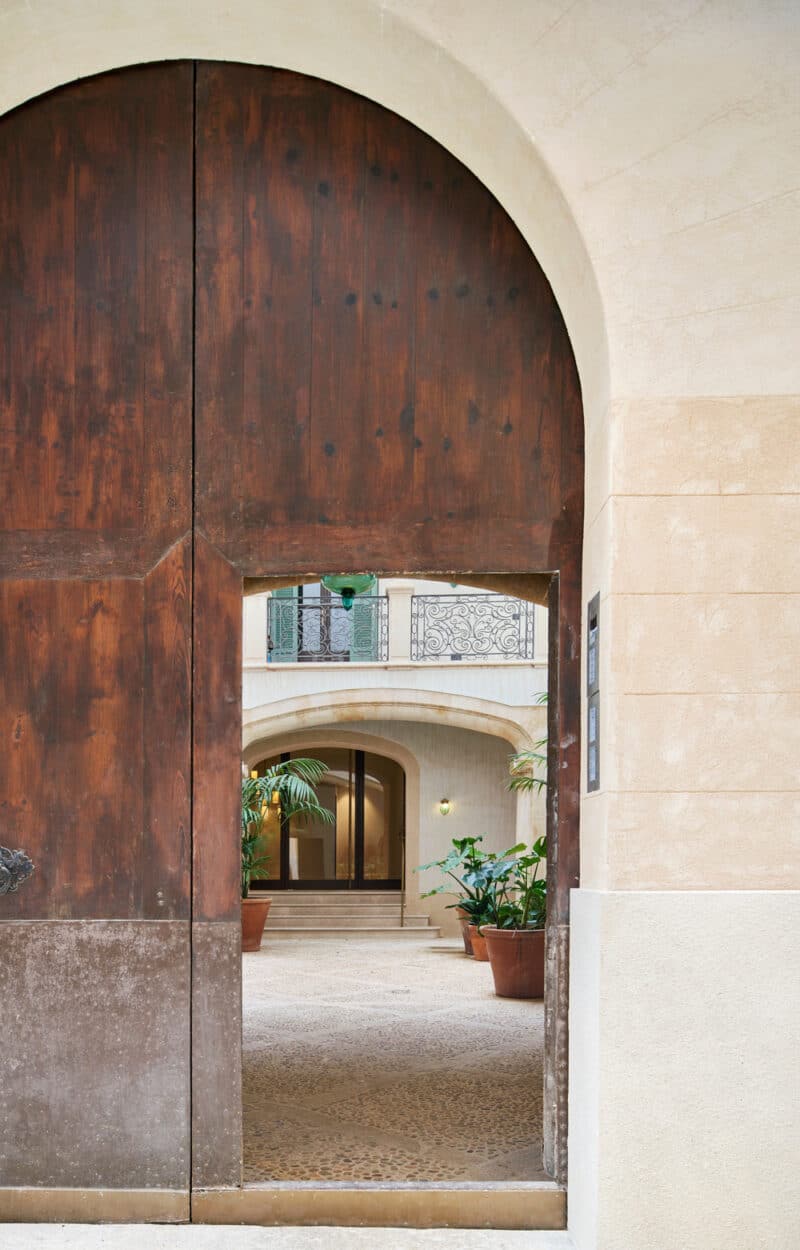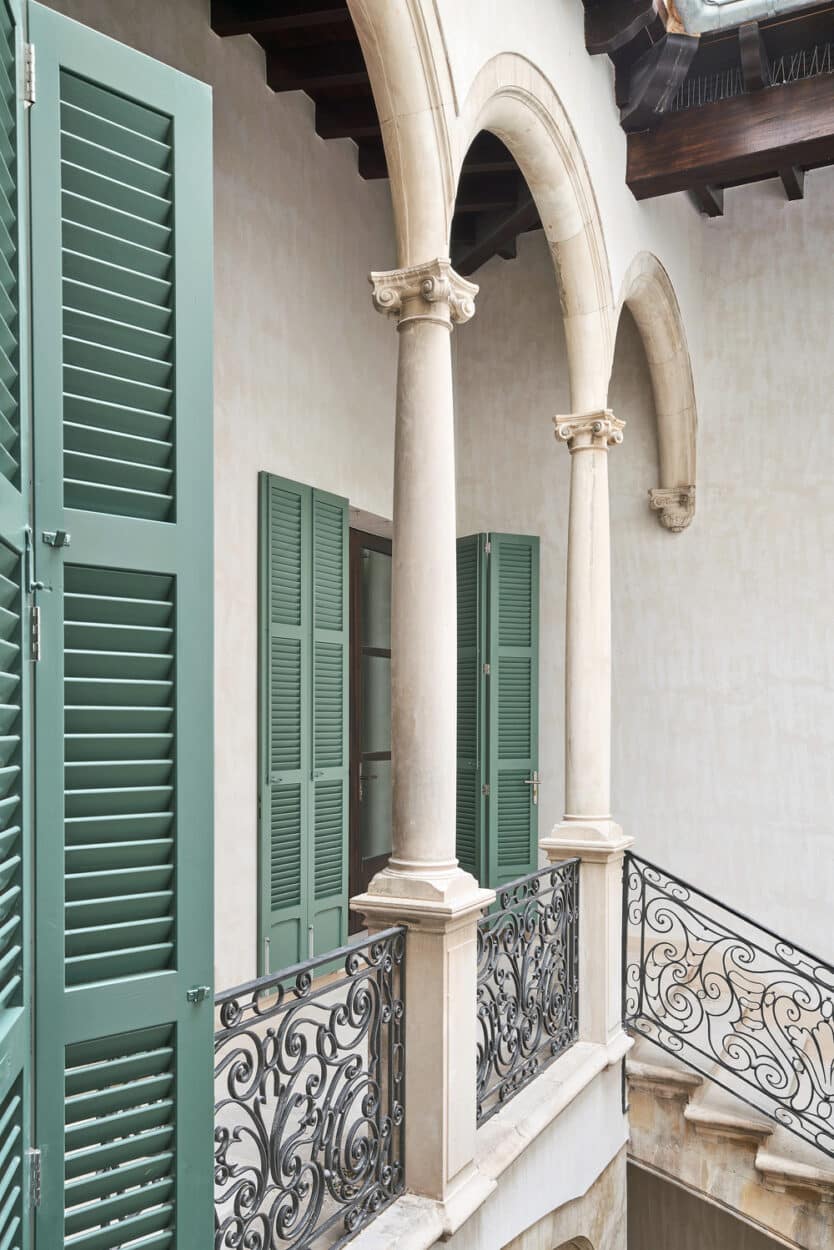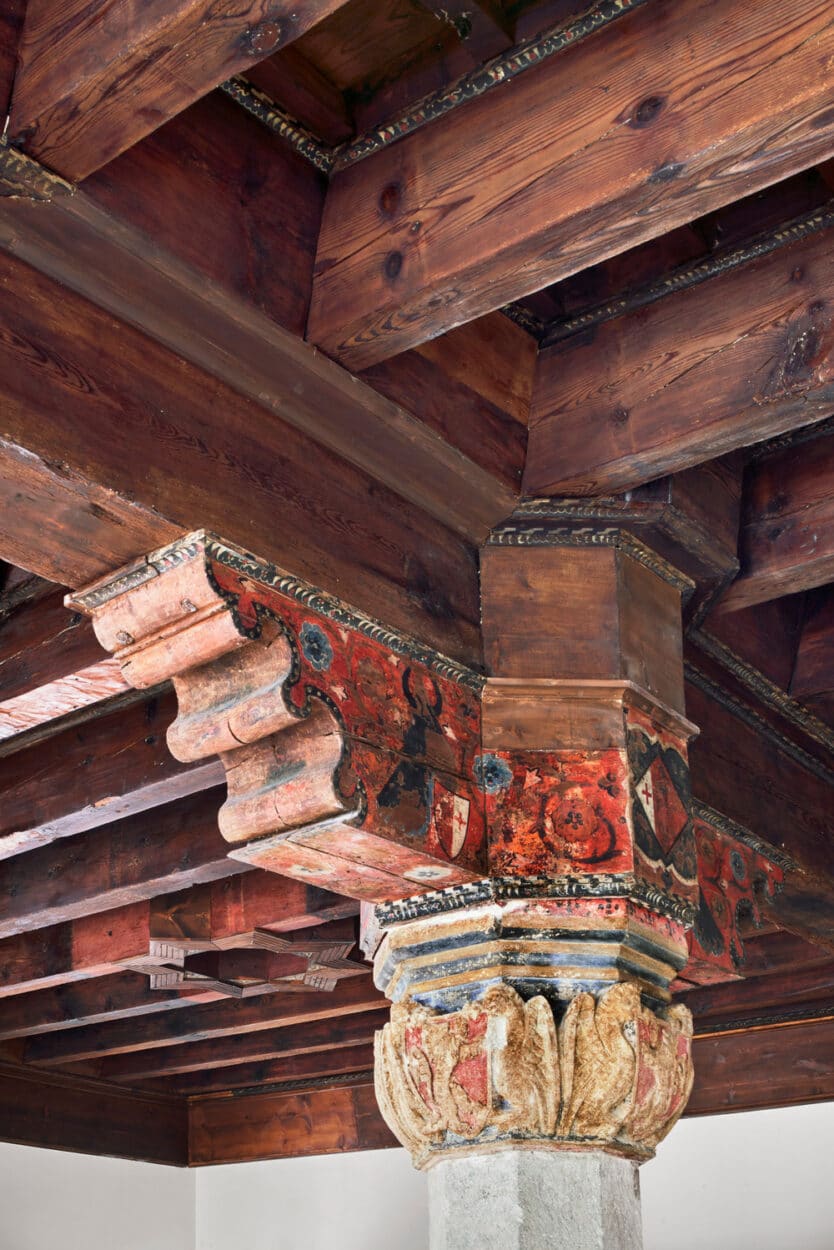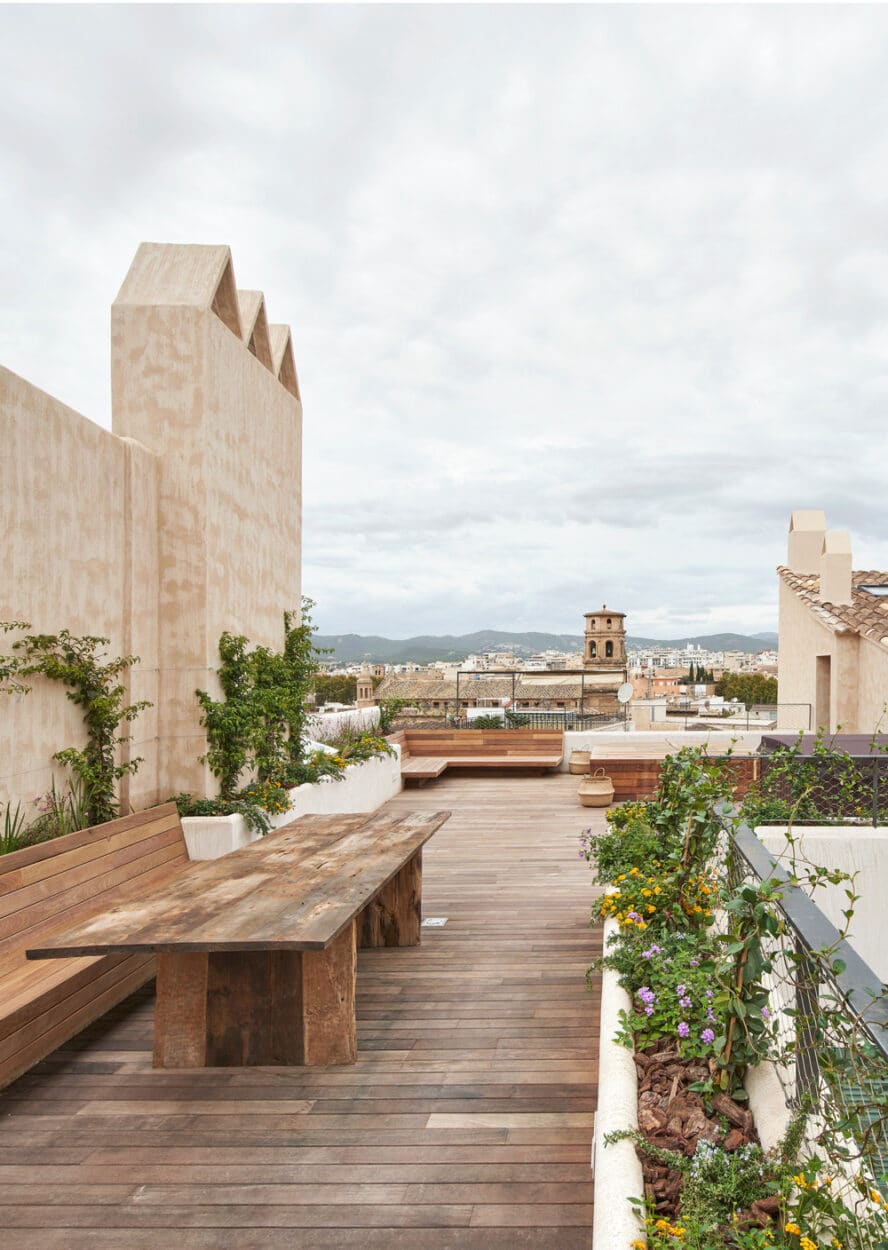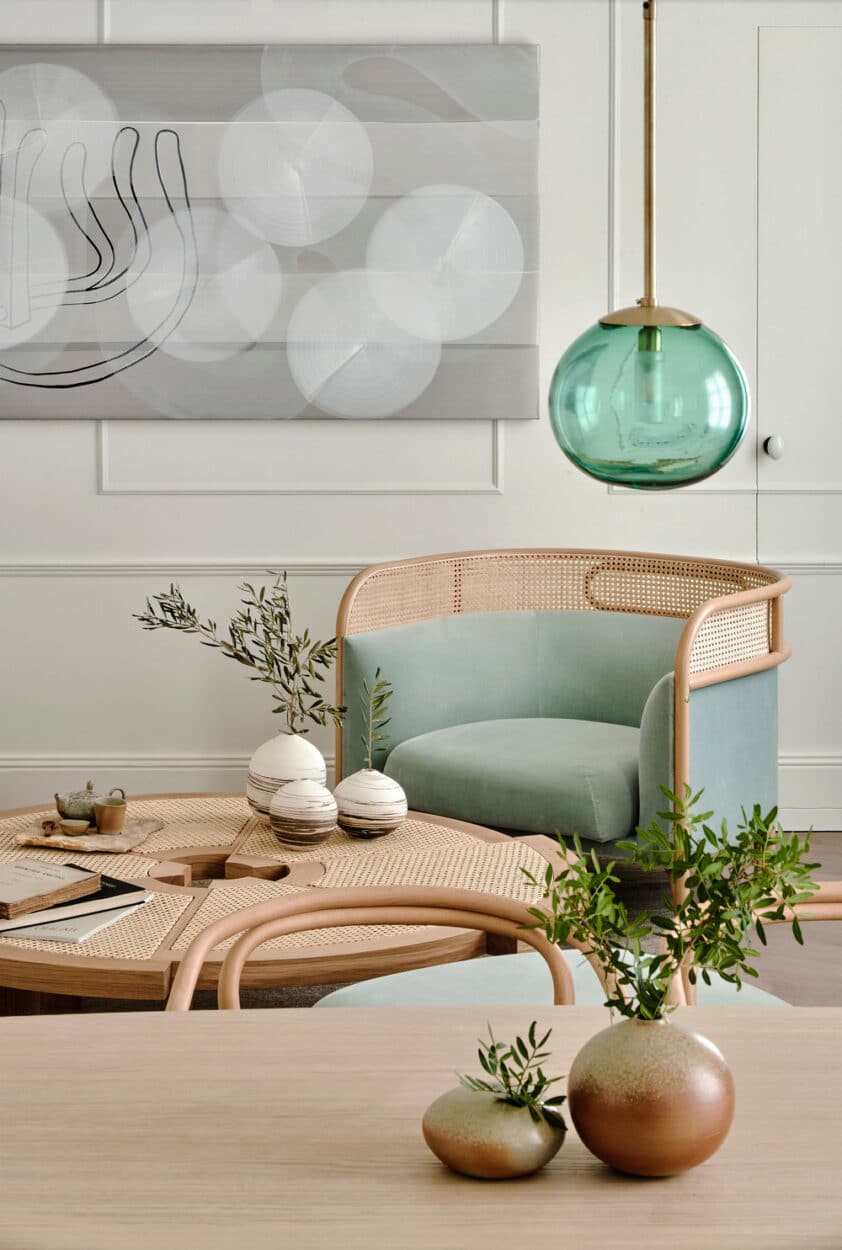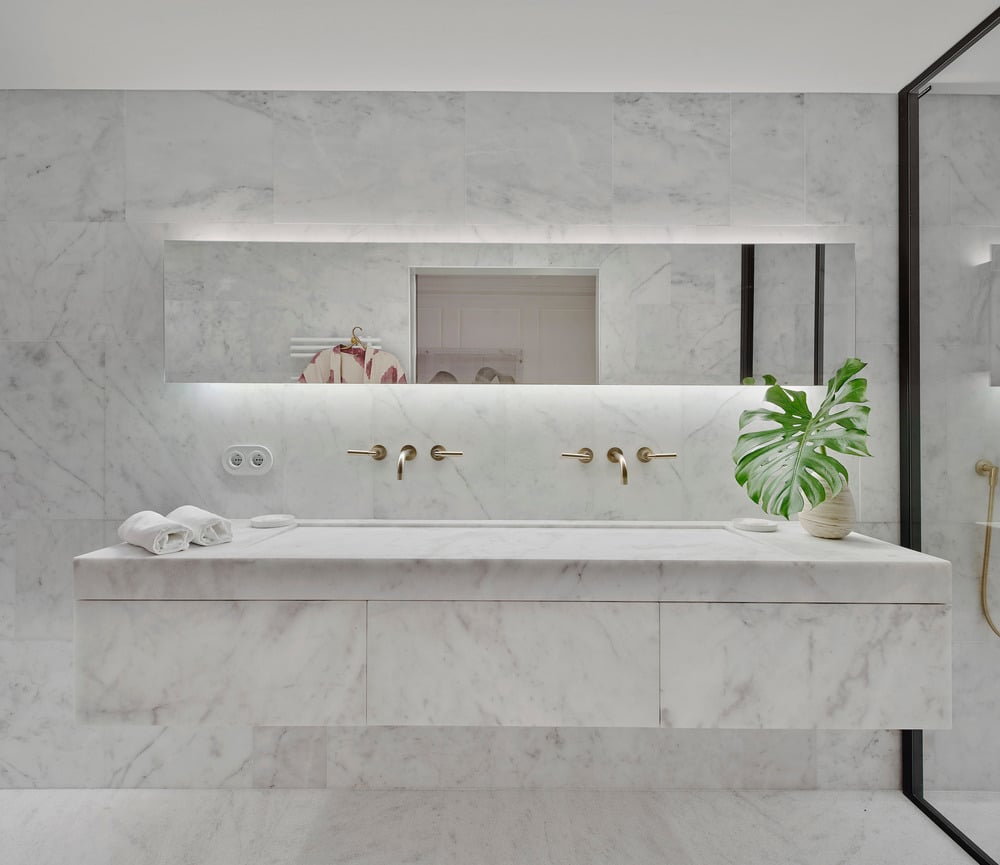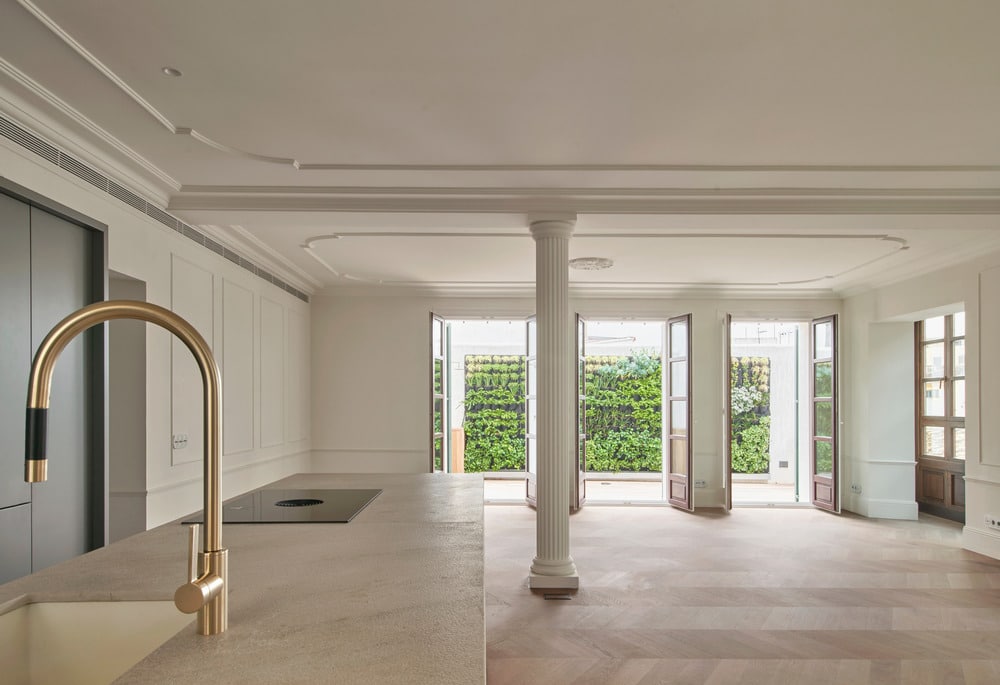OHLAB renovated Can Santacilia, a residential building in Palma Majorca, and showed how historical architecture can be preserved and modernized via careful restoration and diligent architectural research.
Multi-award-winning Spanish design firm OHLAB (Oliver Hernaiz Architecture Lab) finished a renovation project involving the historical Can Santacilia, a 3,300 m2 residential building consisting of 15 apartments and common areas located in the heart of Palma de Majorca’s city center. The historical project was a careful renovation of two buildings, with some elements estimated to date back to the 12th or 13th century.
Although the origins of the main building date back to the 12th or 13th century, it appears in city records as Can Santacilia in 1576. Prior to the OHLAB renovation, the building underwent multiple renovations and transformations through time, including a renovation in the 18th century and the 20th century during which it was divided and converted into several dwellings. The main courtyard was not preserved in good condition, but the structure deserved to be restored, as well as its main facade at Tagamanent square, which preserves part of the 18th-century decor. Therefore, although the building had a history of more than 400 years, it had been largely modified and distorted by the time the firm began the project.
The recent renovation of Can Santacilia has been recognized and it has become one of the finalists for various awards this year that include the World Architecture (WAF) Awards under the New and Old category and the Inside Festival Awards under the Residential Project category.
Preserving and Modernizing Historical Architecture
The team at OHLAB focused on historical responsibility, for which they researched the different interventions over time to discover, recover and enhance the main architectural elements and spaces. They avoided eliminating or concealing alterations that occurred throughout history, highlighting the different stages and interventions by recognizing aspects of value in each of them.
Still, they needed to render the project important by integrating the building into the daily activities of the city. They aimed to make it a modern, comfortable residential building with all the services and facilities required for a contemporary lifestyle. To accomplish this goal, the architects updated or modernized the spaces. It involved repairs to the existing structures and addressing the challenges of a 17th-century façade with its volume and extreme rigidness, making it difficult to modify.
OHLAB successfully combined old and new elements within spaces at the Can Santacilia, as exemplified by the harmonious balance of selected contemporary furniture with modern facilities and structural wooden framings done in the interiors painted in a muted palette of neutral colors. All the while, they managed to preserve the key original features that include the main courtyard located in the center, as well as the 18th-century decor of its main facade at Tagamanent square.
Despite the constructive restrictions of a historical renovation in a listed building, the architects designed the project with sustainability parameters to maximize its energy efficiency, increasing thermal insulation, taking care of thermal bridges throughout its envelope and using an efficient centralized air conditioning system.
Unexpected Areas with Unique Dwellings
OHLAB’s renovation project takes advantage of the complexity of the existing building as a potential to generate unexpected spaces where each dwelling is totally different. The architects transformed the entire building into a proposal that bases its uniqueness on the recovery of the historical essence of the building and a commitment to contemporaneity.
The project recovers the entrance courtyard that had been distorted through previous modifications, restoring the old splendor of an area so deeply rooted in the classic typology of noble dwellings in Palma de Mallorca’s old town. The courtyard becomes the main entrance to the heart of the building. It opens onto the landscaped terraces and communal areas, including a gym and an indoor pool with a spa which opens directly onto the courtyard.
A second inner courtyard has been recovered as part of a private home garden, in addition to five terraces for different homes from which dwellers can enjoy views over the rooftops of the city.
AMM Technical Group provided structural engineering while Jorge Ramón acted as the building engineer. The kitchen design was done by Espacio Home Design.
Preference for Noble and Natural Materials
At Can Satacilia, special attention has been paid to the selection of natural, noble and local materials, emphasizing the building’s history and Mediterranean essence. A simple palette of natural materials encompasses the entire project, combining the restoration of historical elements such as wood carpentry, stone and wood structural elements, plaster and wood moldings, wooden coffered ceilings, mortar and lime coatings, stone and wood ceramic floors, and wrought ironwork. Along with these natural references, a careful selection of noble materials includes antique bronze pieces, local stones, mirrored cloths, porcelain details and local linen and cotton textiles.


